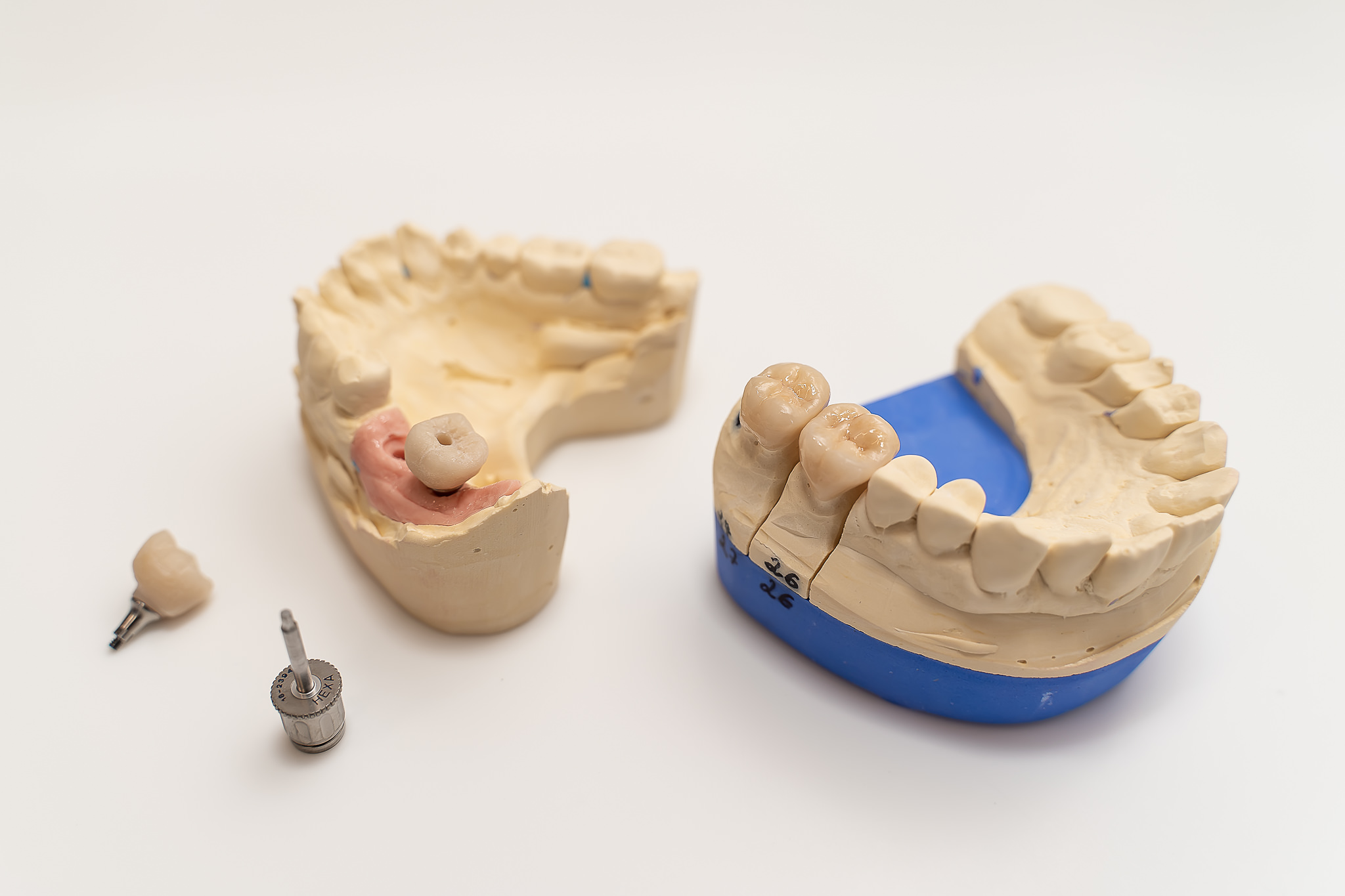If by larger defects the stability of the teeth cannot be guaranteed with conventional fillings the insertion of inlays, partial crowns and full crowns, mostly of ceramic, are used.
These highly aesthetic and durable restorations have many advantages in functional and physical terms. The design in the dental laboratory allows perfect contact points in all directions and the abrasion behaviour of the ceramic is adapted to the natural enamel. To achieve lasting aesthetic results, existing fillings or discolouration may be in the way of expectations. However, if errors in shape, colour or tooth position are to be corrected, full crowns are often too invasive a measure. Veneers, extremely thin ceramic shells, made of high-performance ceramics help here. After an appropriate analysis, only a minimal layer of the surface of the tooth is removed.

If it can not be a fixed option...
We’ll go back to removable solutions. These can be very different in the manner of production, which also affects the wearing comfort and the cost. In general, these prostheses are much more affordable than fixed solutions, but usually associated with limited comfort and quality of life.
Working with highly qualified master dental laboratories we have strong partners in the production of every kind of prosthetics.
Why Close Gaps
The loss of one or more teeth creates a gap.
This usually brings movement into the system: the teeth in the opposing jaw, in front of and behind the gap change their position - not always fast, but continuously. As with a defective zipper, it comes to the loss of the tooth-in-tooth relation. The consequences can be: increased wear of the remaining teeth, TMJ problems, facial pain and headaches, migraines, cervical and shoulder pain, tinnitus, etc.
In order to remedy such symptoms complicated therapies are usually necessary. It is better to close the gap promptly by means of a prosthesis, bridge or implant.
